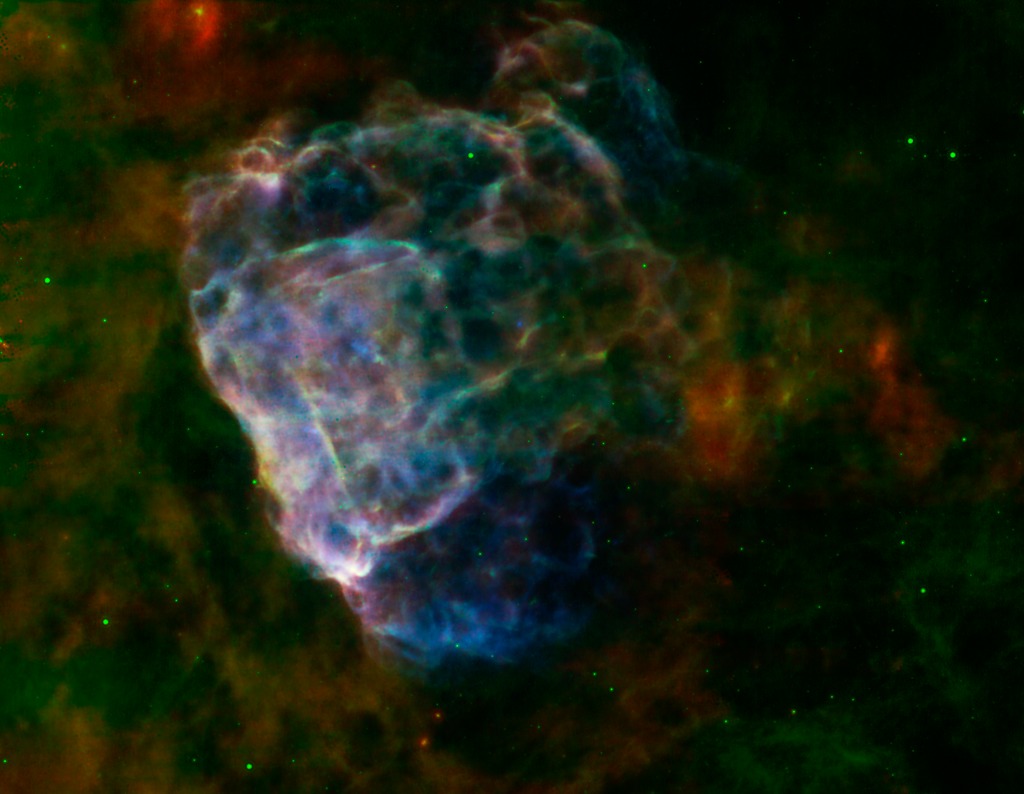
Credit: NASA/ESA/JPL-Caltech/GSFC/IAFE
Observation • August 21st, 2014 • sig14-022
sig14-022
The destructive results of a mighty supernova explosion reveal themselves in a delicate blend of infrared and X-ray light, as seen in this image from NASAs Spitzer Space Telescope and Chandra X-Ray Observatory, and the European Space Agency's XMM-Newton.
The bubbly cloud is an irregular shock wave, generated by a supernova that would have been witnessed on Earth 3,700 years ago. The remnant itself, called Puppis A, is around 7,000 light-years away, and the shock wave is about 10 light-years across.
The pastel hues in this image reveal that the infrared and X-ray structures trace each other closely. Warm dust particles are responsible for most of the infrared light wavelengths, assigned red and green colors in this view. Material heated by the supernovas shock wave emits X-rays, which are colored blue. Regions where the infrared and X-ray emissions blend together take on brighter, more pastel tones.
The shock wave appears to light up as it slams into surrounding clouds of dust and gas that fill the interstellar space in this region.
From the infrared glow, astronomers have found a total quantity of dust in the region equal to about a quarter of the mass of our sun. Data collected from Spitzers infrared spectrograph reveal how the shock wave is breaking apart the fragile dust grains that fill the surrounding space.
Supernova explosions forge the heavy elements that can provide the raw material from which future generations of stars and planets will form. Studying how supernova remnants expand into the galaxy and interact with other material provides critical clues into our own origins.
Infrared data from Spitzers multiband imaging photometer (MIPS) at wavelengths of 24 and 70 microns are rendered in green and red. X-ray data from XMM-Newton spanning an energy range of 0.3 to 8 keV (kiloelectron volts) are shown in blue.
About the Object
- Name
- Puppis A
- Type
- Nebula > Type > Supernova Remnant
- Distance
- 7,000 Light Years
Color Mapping
| Band | Wavelength | Telescope |
| Infrared | 70.0 µm | Spitzer MIPS |
| Infrared | 24.0 µm | Spitzer MIPS |
| X-ray | 1.5 keV | Chandra ACIS |
| X-ray | 1.5 keV | XMM-Newton |
Astrometrics
- Position (J2000)
- RA =8h 22m 26.9s
- Dec = -43° 2' 46.9"
- Field of View
- 1.4 x 1.1 degrees
- Orientation
- North is 59.3° left of vertical



